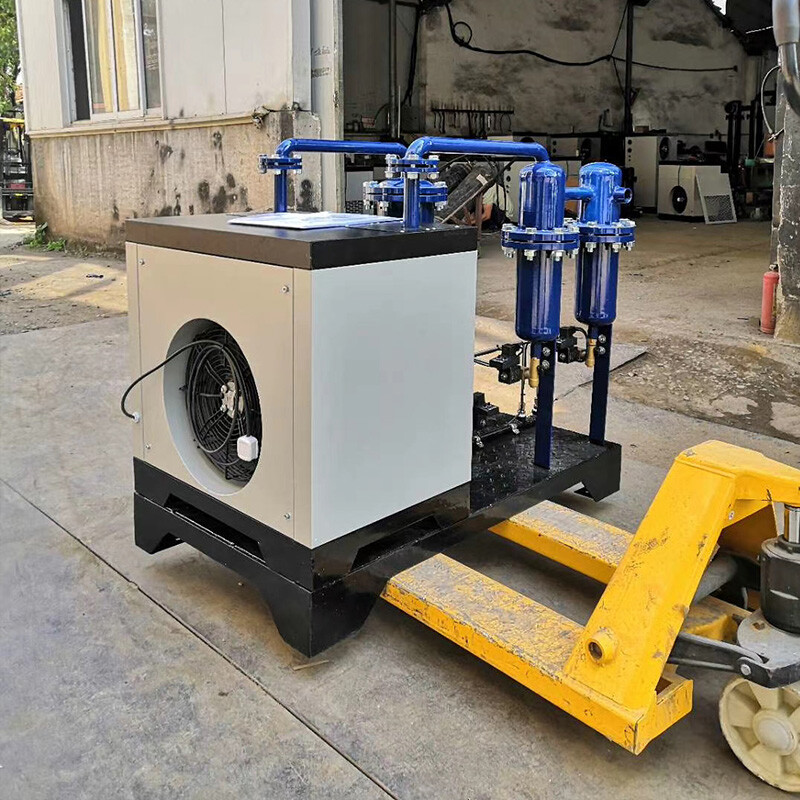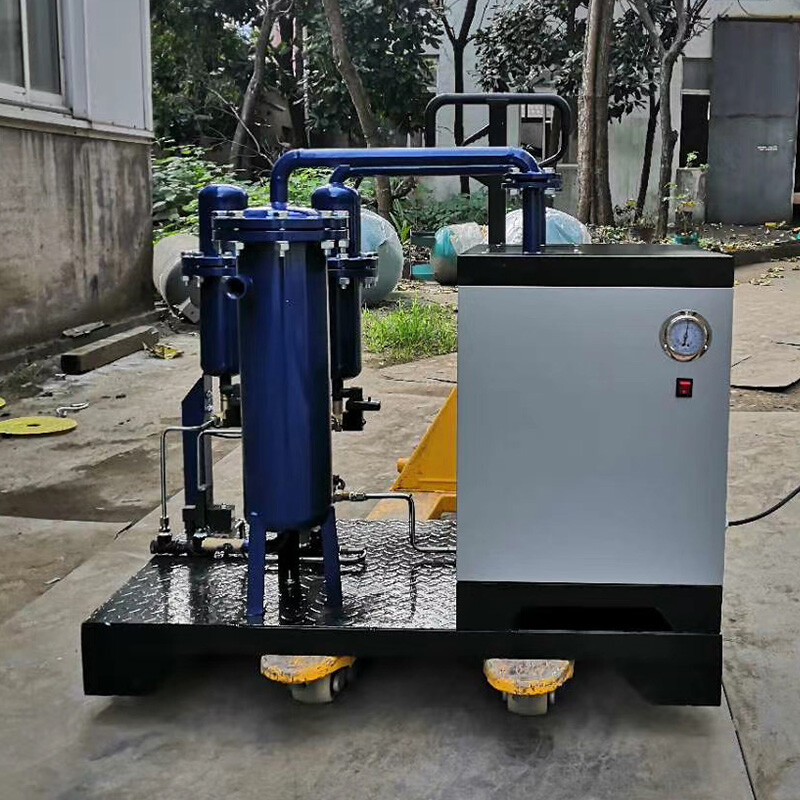PRODUCTS
PRODUCTS
Air Compressor Auxiliary Machine
Working Principle
Based on the principle of refrigerated air drying (cooling to dew point), the system utilizes refrigeration equipment to cool moist, hot compressed air to a specific dew point temperature (saturation temperature). At this stage, moisture condenses and is separated via a coalescing separator, while the liquid water is discharged through an automatic drain valve, achieving the desired dry air dew point.
Based on the principle of refrigerated air drying (cooling to dew point), the system utilizes refrigeration equipment to cool moist, hot compressed air to a specific dew point temperature (saturation temperature). At this stage, moisture condenses and is separated via a coalescing separator, while the liquid water is discharged through an automatic drain valve, achieving the desired dry air dew point.
Description
Technical Parameters
Detail Images
Refrigerant Process
High-pressure gas from the compressor enters the condenser, releasing heat to liquefy.
Liquid refrigerant passes through a thermal expansion valve, becoming a low-pressure gas-liquid mixture.
In the evaporator, the refrigerant absorbs heat from compressed air and vaporizes.
Vaporized refrigerant returns to the compressor, completing the cycle.
Frost Prevention Mechanism
To prevent ice buildup on evaporator surfaces (critical for airflow stability):
A hot gas bypass valve regulates evaporation pressure.
When pressure drops excessively, the valve injects hot refrigerant gas to maintain evaporator surface temperatures above 0°C.
Online Consultation
Related Recommendations



